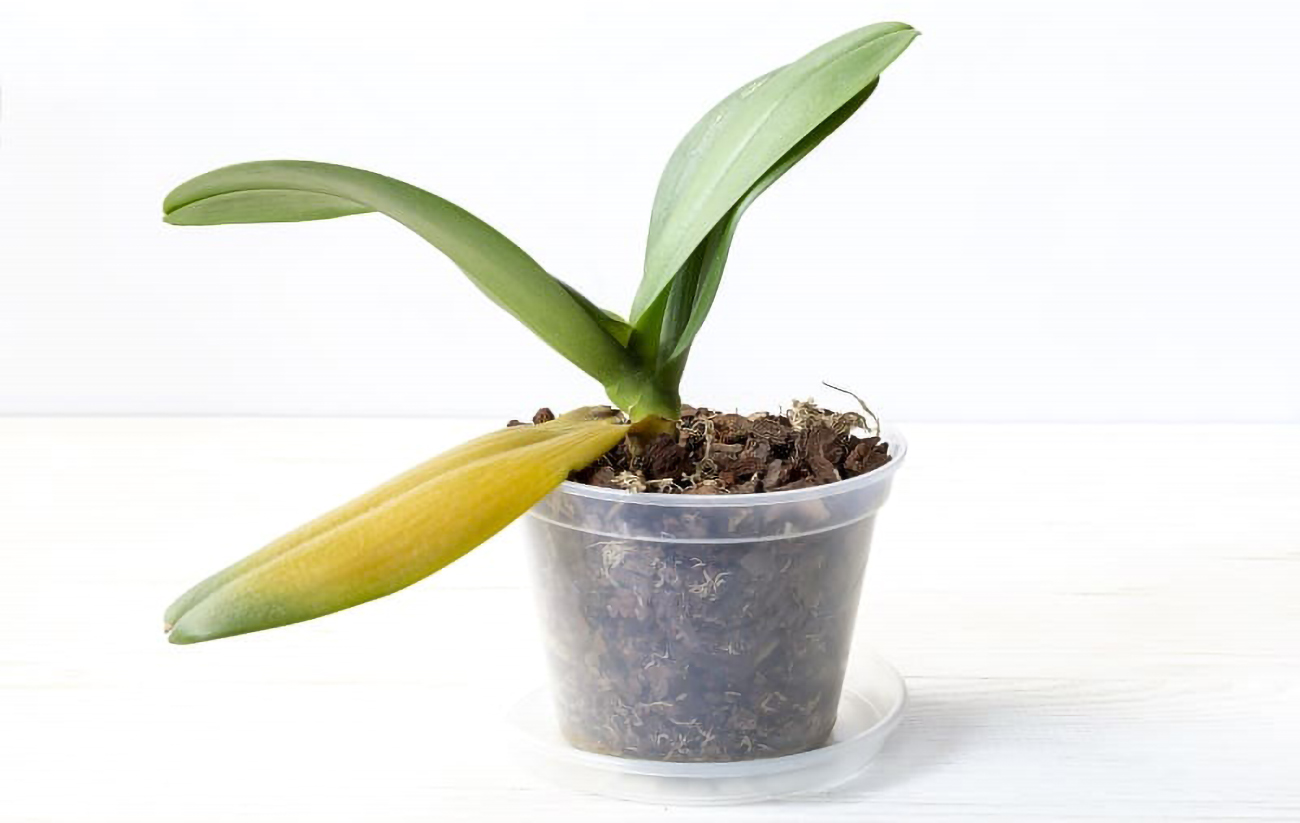It is not uncommon for orchid bushes to have yellow leaves. It can be both a sign of illness and a natural process. Why are orchid leaves turning yellow? Detailed reasons for this problem about orchid yellow leaves will be described in this article.
Leaves turning yellow on a plant can indicate a few different things, depending on the type of plant and the specific circumstances. Here are some possible reasons why leaves may be turning yellow:
- Overwatering or Underwatering: Plants that are overwatered or underwatered may develop yellow leaves. Overwatering can lead to root rot and other issues that can cause leaves to turn yellow and fall off. Underwatering can also cause leaves to turn yellow as the plant tries to conserve water.
- Nutrient Deficiency: Plants that are not getting enough of certain nutrients, such as nitrogen, iron, or magnesium, may develop yellow leaves. This can be caused by poor soil quality, improper fertilization, or other factors.
- Environmental Stress: Plants can be sensitive to changes in their environment, and may develop yellow leaves in response to stressors like temperature changes, humidity fluctuations, or exposure to harsh chemicals or pollutants.
- Pest or Disease Problems: Plants that are infected with pests or diseases may develop yellow leaves. Common examples include spider mites, mealybugs, and fungal infections.
If you notice that your plant’s leaves are turning yellow, it’s a good idea to investigate the cause so that you can take appropriate action. Depending on the underlying issue, you may need to adjust your watering or fertilization schedule, improve the plant’s growing conditions, or take steps to control pests or diseases. If you’re unsure what’s causing the yellowing, it’s a good idea to consult a plant expert or a local garden center for advice.
But now we will talk about orchids.
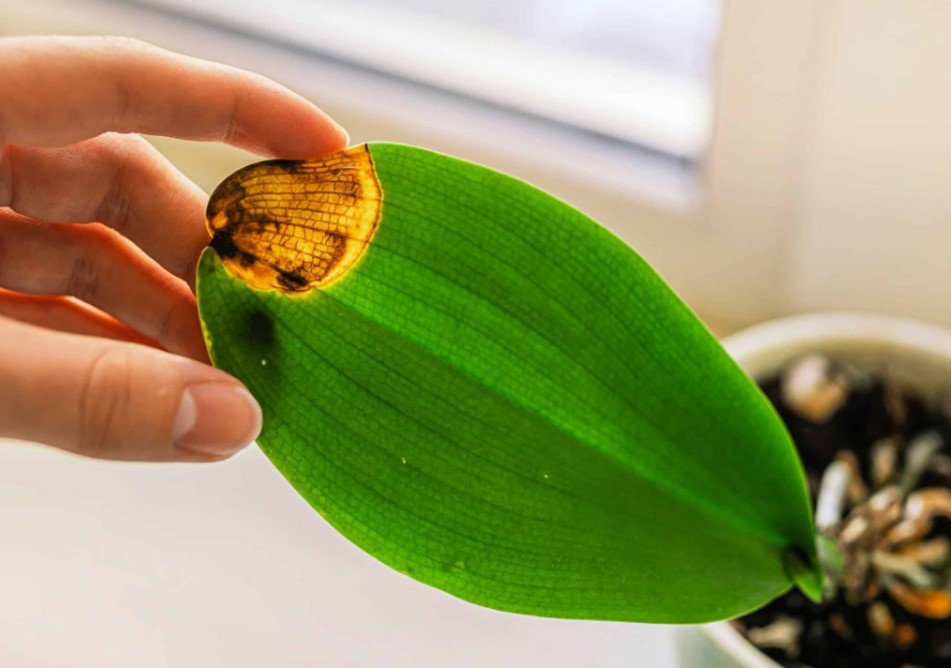
Orchid yellow leaves
Yellowing leaves can appear for a variety of reasons. More about it will be discussed below.
Natural process
Many are interested in, why are orchid leaves turning yellow? In most cases, yellowing leaves is a completely natural process. For the development of new leaves and peduncles, the lower leaves turn yellow, after which they fall off.
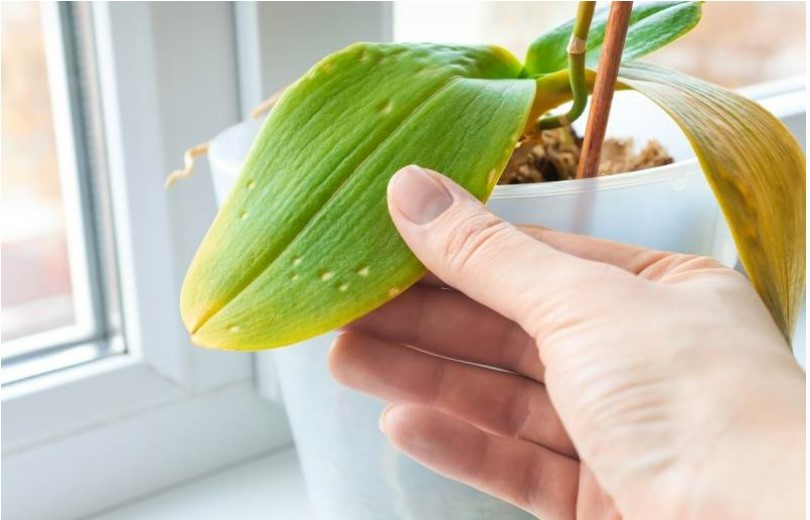
This is because tropical plants prefer new growth. And the lower leaves are not needed.
Water stops flowing to the leaves, so their fall will happen soon.
How to determine the naturalness of the process? Many gardeners wonder, how to know if yellowing leaves in your orchid are natural? After all, no one wants to assume that fungal or bacterial infections in the potting medium have been overlooked. Dying back is natural if the bottom few sheets turn yellow.
You should not interfere with this process. So, sometimes you may see, that the orchid leaves turning yellow and fall off. You can not remove the orchid leaves yourself because the appearance of the bush will deteriorate. This increases the chance of developing diseases. After all, an open wound will be created through which bacteria will penetrate inside.
You can remove the leaves when they fade and turn completely yellow. You need to work with a sterile knife.
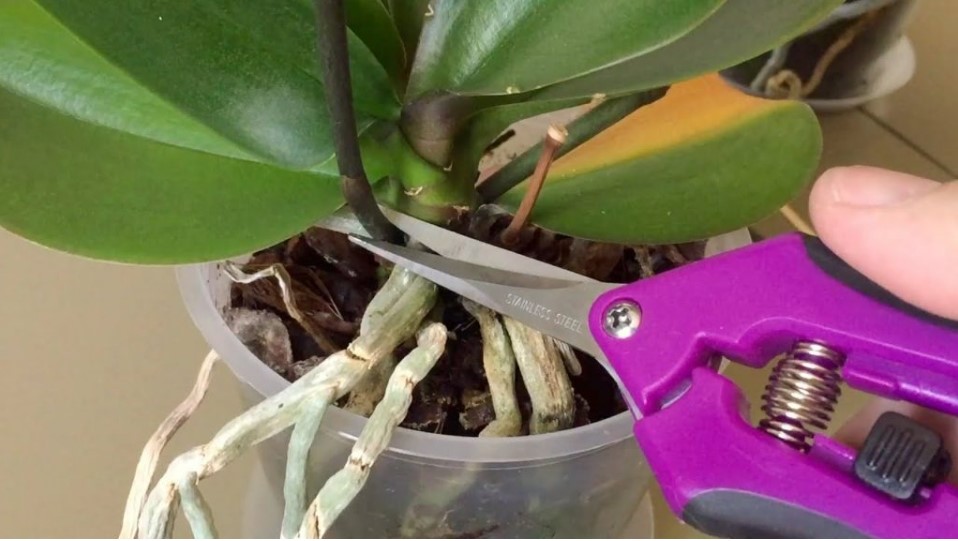
Lots of sunshine
Almost all orchids belong to tropical crops. They grow under trees to protect themselves from direct sunlight. If you put flower pots in the wrong place, you may see yellowing orchid leaves after a while.
If there is too much direct sunlight hits the crop, the leaves will not just turn yellow. The tips will burn, and cracks will form on the surface of the sheet. It is better to install flowerpots on the northern and eastern windows with bright indirect sunlight in summer and move them to the south side in winter.
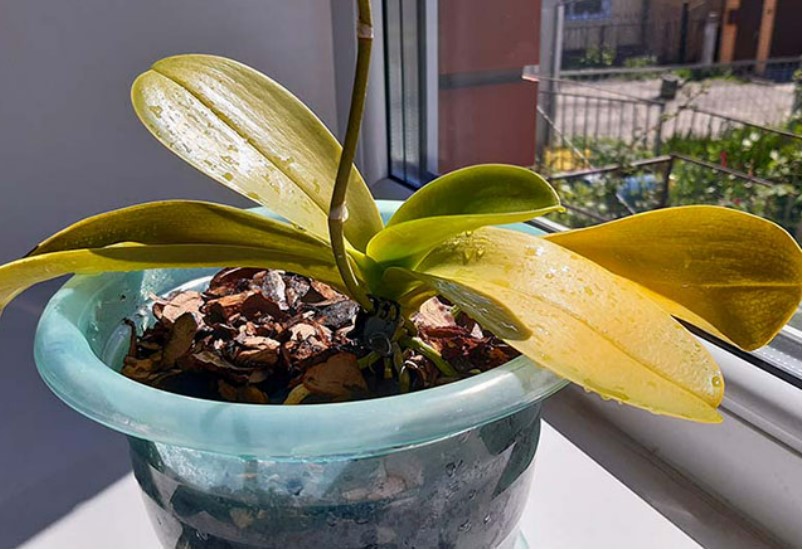
Influence of different temperatures
Orchids need proper storage. The optimum temperature for them is between 60℉ and 80℉. This temperature is observed in almost all homes, so no additional manipulations are required. If the temperature is below 60℉ or above 80℉, the plants may have stress. The leaves will begin to turn yellow and dry with great speed. After that, they will completely fall off.
Stress against the background of the temperature regime can provoke browning or blackening of the leaf plates.
The plant may die altogether.
The easiest way to solve the problem is caused by the wrong temperature regime. It is necessary to check the places where the orchids are located several times. For convenience, use a thermometer. The temperature must be within acceptable limits.
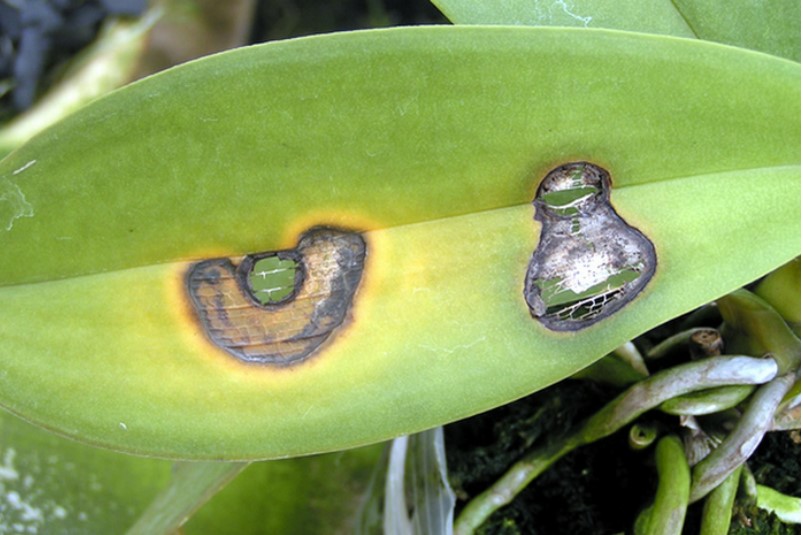
Overwatering can cause yellowing leaves and root rot
If you water orchid bushes too actively, this can cause the leaves to turn yellow. It is not excluded that root rot will begin to develop at all, due to which the entire plant may die. If you pour too much water into the pot, the plant will not absorb it well. At the same time, it will experience a lack of nutrients from the potting medium.

This is a pretty serious problem. It may cause root rot. Try to control the amount of water that you pour under the orchid bushes. Even if once the amount of water is exceeded, you should not worry. Next time, try to keep an eye on the amount of water.
Plants should be watered only after the potting medium in the pot is dry. You can check it with a finger. If you feel a little moisture in the potting medium, it is better to postpone watering for another day.
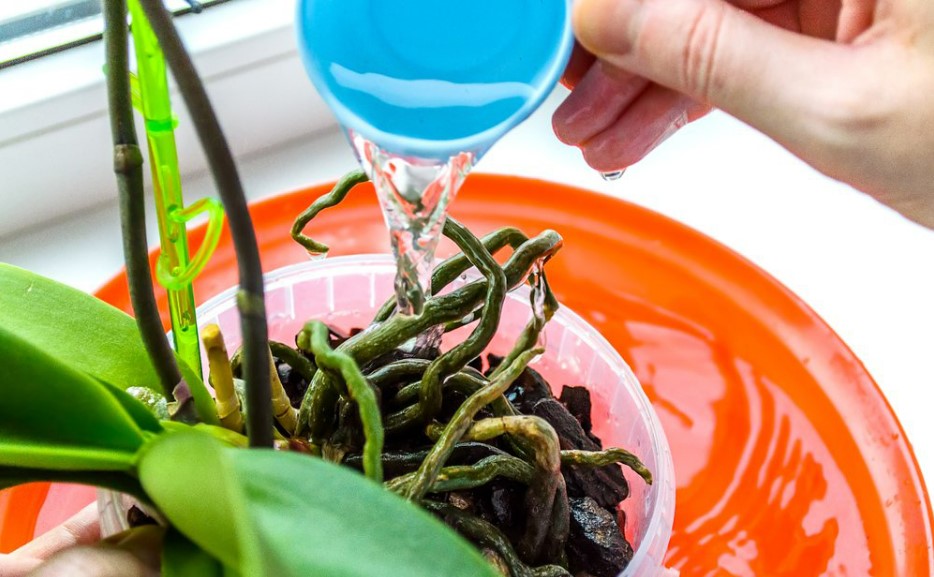
Environmental changes
If you provoke environmental changes or rearrange flower pots, they can have stress. Therefore, it can be the leaf yellowing and falling off. If you brought a new flower from the store, the yellowing of the leaves will be quite a natural process. After all, conditions have changed for the phalaenopsis orchid. Literally, after a while, the situation will normalize.
You just need to put the flowerpot in the right place. You should also ensure the right climate in the room. It is best to clarify the conditions for growing and breeding orchids from a breeder or seller. This will make it easier for you to find the right conditions.
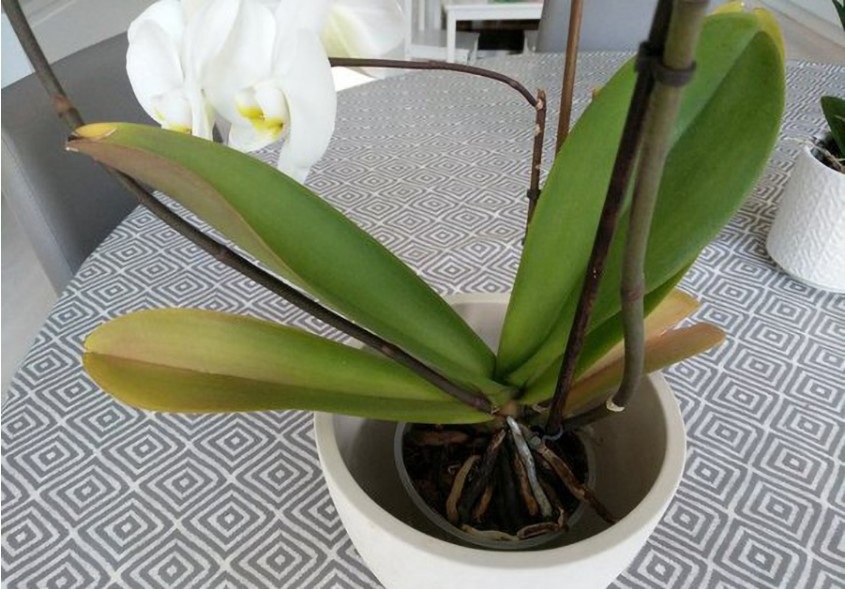
Excessive fertilizer or nutrient deficiency
It is possible to add too much fertilizer. This can cause the accumulation of nutrients in the soil, including zinc, calcium, copper, and manganese. Even though plants need a large number of nutrients, you can not overdo it with them. After all, otherwise, the bushes will not be able to consume iron, which is important for them.
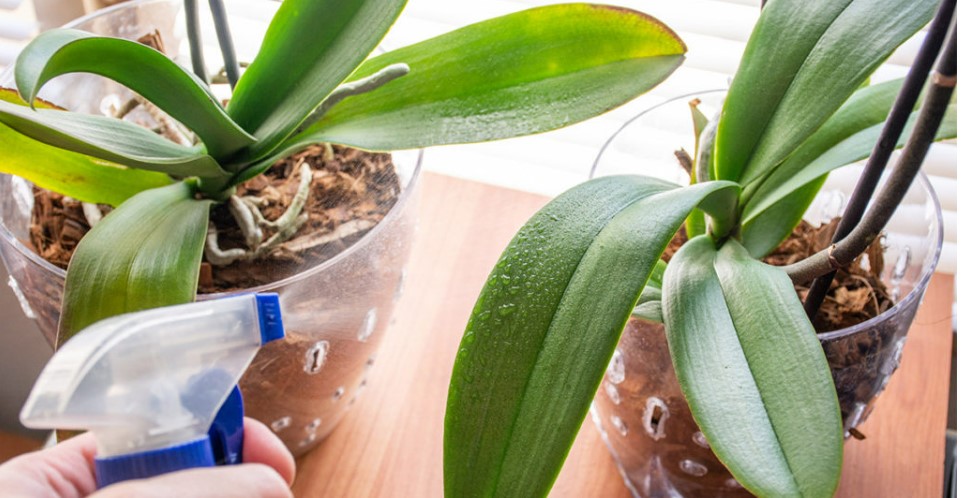
If iron is not enough for orchid roots, they develop yellow leaves. This process is called chlorosis. To maintain the health of the flowers, it is necessary to control the amount of orchid fertilizer applied. After all, you won’t be able to take them back.
It is recommended to initially study the question of how much fertilizer is applied under the orchid bush at a time. It is best to stop at rare top dressing because orchids easily absorb nutrients. It is recommended to use liquid fertilizers.
It is better to use fertilizers that are designed specifically for orchids. Also, the dosage should be reduced by 1/3 compared to other plants if a generic preparation is used. Try to follow the instructions on the packaging.
Do not use fertilizers that dissolve in water on an ongoing basis. Eliminate the top dressing during flowering.
Nutrients are applied when the flowers fall. This will stimulate the growth of plants, and new flowers will begin to appear more actively.
Yellow leaves may appear if orchid bushes are not getting enough nutrients. Some gardeners think the plant doesn’t need anything, so they leave fertilizer out of their shopping list. However, it is important to remember that nutrients will not stay in the soil forever.
After the nutrients run out, the plant will change in external parameters. Therefore, the top dressing should be applied immediately. Healthy roots are often deficient in nitrogen, zinc, manganese, and iron. All of them ensure the correct growth of bushes.
To avoid problems, it is recommended to fertilize at intervals of two weeks. You should also follow all the recommendations that are written on the packaging with fertilizers.
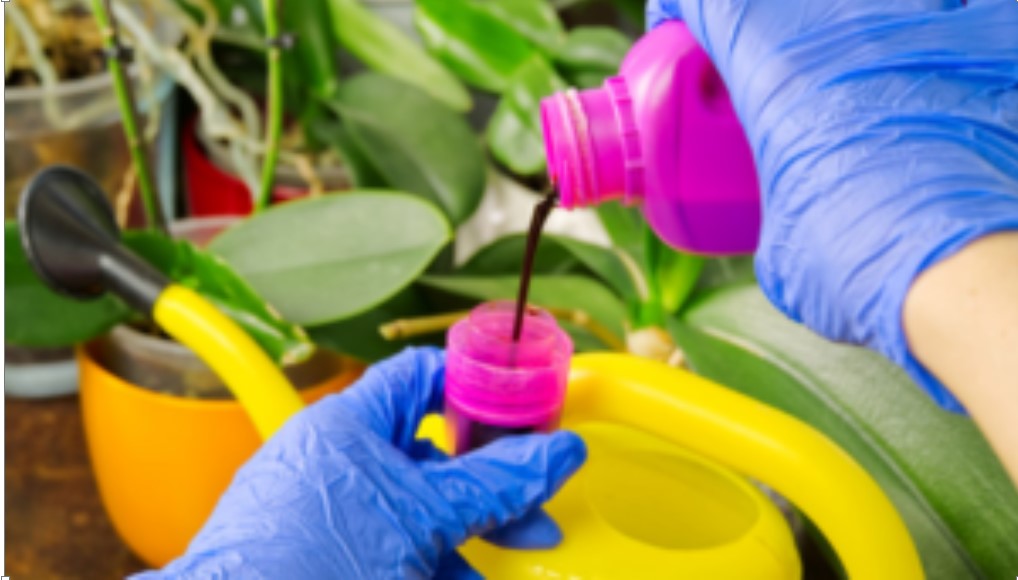
Exposure to chemicals and hard water
Unpleasant symptoms on the bushes can appear if watering is carried out with the wrong water. It is not recommended to use tap water. Experienced gardeners advise using distilled or settled water.
As you know, in many regions, water is treated with chlorine. It will be quite difficult for orchids to process this substance, so the tips on the leaves will begin to actively turn yellow. Also, if you overwater your plant with hard water, it may cause root rot.
Hard water is characterized by a high content of calcium and magnesium. They can block the ability of orchids to absorb all the necessary trace elements. Therefore, the bushes will experience a lack of nutrients.
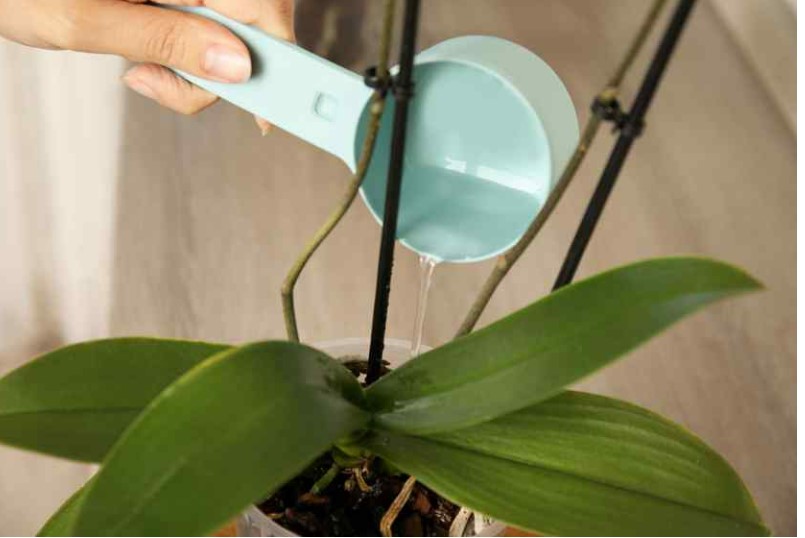
Do yellow leaves need to be cut?
Many gardeners wonder, should I cut yellow orchid leaves off?
It is best not to pluck or cut them. Leaves that have turned yellow will fall off on their own. If you decide to help them, you risk damaging the bushes.
When the leaf plate falls off on its own, the place to which it was fixed will be sealed.
This does not form an open wound. If you pick the leaves yourself, the wound will show. Through wounds, fungal pathogens can enter the bush. They can further damage the bushes.
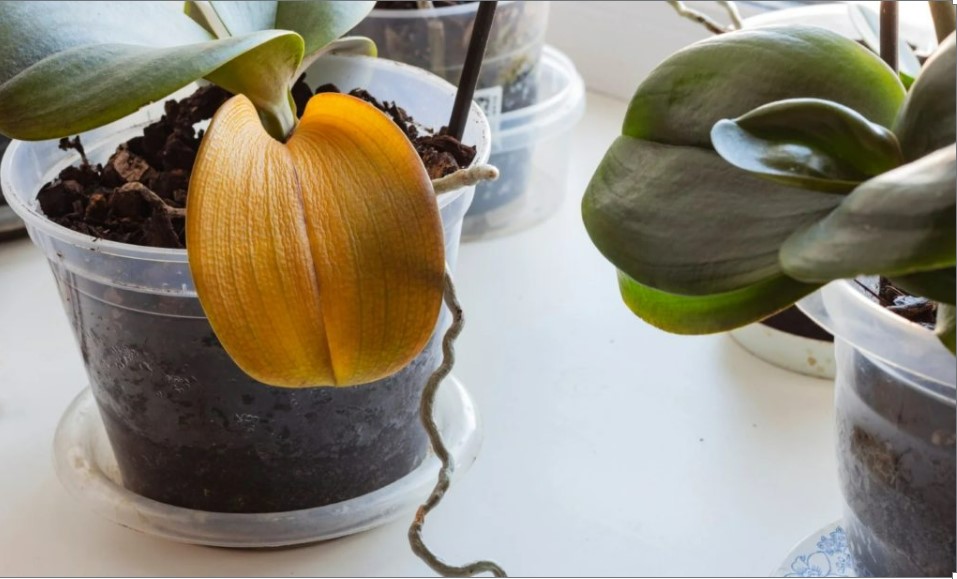
Conclusion
As you can see, when orchid leaves are yellow, it is not a problem. It can appear for various reasons. Often this is a natural process or improper care. However, the leaves must not be touched. It is better to wait for them to fall off on their own.
What do you do when orchid leaves turn yellow?
When orchid leaves turn yellow, it could be due to over watering, under watering, lack of light, or fertilizer imbalance. To resolve the issue, adjust the plant’s care accordingly, such as providing proper light and water, and repotting it in a well-draining potting mix. Check the plant’s roots and remove any rotted roots.
Why is my orchid plant leaf turning yellow?
Orchid leaves may turn yellow due to over watering, under watering, lack of light, or fertilizer imbalance. Check the plant’s care and adjust as needed, such as providing proper light and water, and repotting in a well-draining potting mix. Check the roots for signs of rot and remove any rotted roots.
How do I add calcium to my orchid?
Calcium can be added to an orchid’s soil by using calcium-rich fertilizers, such as bone meal or eggshells, or by drenching the soil with calcium solutions. To use eggshells, crush them into a powder and sprinkle them on top of the potting mix. To use a calcium solution, mix 1/4 teaspoon of calcium nitrate or calcium chloride per gallon of water and drench the soil with the solution. Be sure to follow recommended application rates and avoid over fertilizing.

